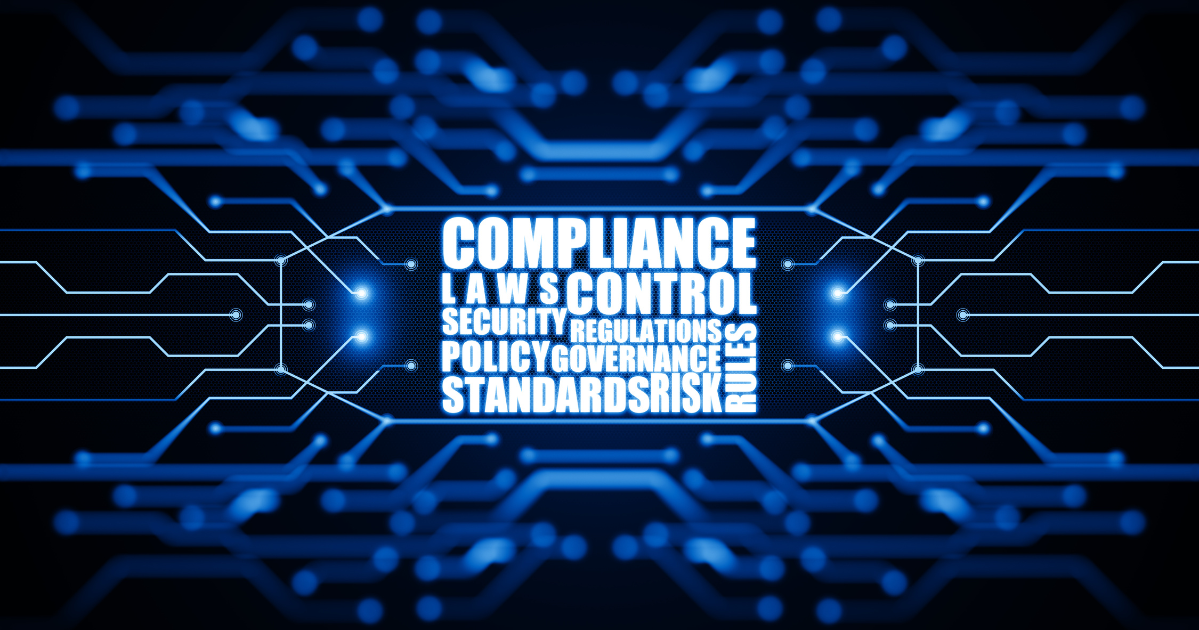
by Rebeca | Sep 24, 2024 | open source, soffid, trends
At Soffid IAM, we often get asked why we share our code base for free, especially when it comes to Identity Governance and Administration (IGA). Last week, a potential customer questioned why we would offer our intellectual property at no cost. It’s a reasonable concern—after all, why would a company give away its product’s core? The answer is simple: security and transparency.
Why Security Isn’t About Hiding Code
One of the biggest misconceptions in software security is that hiding source code keeps it safe. In reality, with the sheer availability of decompilers and reverse engineering tools, anyone determined to access code can eventually succeed. Trying to hide the code only makes it harder for “the good guys”—security teams, auditors, and partners who want to verify its integrity—while malicious actors can still find a way. So, hiding the code is not a real security solution.
At Soffid, we believe that transparency is the key to securing intellectual property. By sharing our source code publicly, we can easily prove authorship in case of disputes without lengthy legal procedures. Customers, auditors, and collaborators can simply visit GitHub or other platforms to verify the legitimacy and timeline of our codebase.
Enhancing Security Through Open Source
When it comes to the security of our customers’ systems, open-source software has clear advantages. By making our code available, we invite not just our own security teams, but also customers, collaborators, and the broader security community to review and identify potential vulnerabilities before they are exploited in production environments.
Some argue that making the code open could allow bad actors to exploit vulnerabilities more easily. While theoretically possible, experience shows that this risk is minimal. For example, Linux—the backbone of over 75% of public servers globally—has demonstrated that open-source systems can be incredibly secure, even with their code open to the public. If anything, having more eyes on the code strengthens it.
The Productivity Boost of Open Source
Beyond security, using open-source tools offers significant productivity benefits for organizations. Without access to the source code, modifying behavior, diagnosing problems, or integrating with legacy systems can be incredibly time-consuming. With open-source IGA, businesses gain:
- Faster Implementation: New policies or configurations can be implemented quickly.
- Easier Problem-Solving: Engineers can directly review and modify the code to resolve issues faster.
- Flexibility: Customizing the platform to meet specific needs becomes much easier.
- Better Integration: Integrating with legacy systems or external tools is more straightforward when the source code is accessible.
The Benefits for Soffid IAM Customers
At Soffid IAM, we stand by our decision to offer open-source IGA because it provides several tangible benefits for our customers:
- Enhanced Security: Open-source allows for continuous code reviews, reducing vulnerabilities.
- Faster Project Completion: Customizations and issue resolutions are faster with open-source access.
- Fewer Technical Limitations: Our customers can build, modify, and extend the platform to meet their needs, without waiting for updates from us.
- Lower Costs: By minimizing troubleshooting time and simplifying integrations, open-source tools reduce overall implementation and maintenance costs.
Why We Haven’t Found Any Drawbacks
You might think there are drawbacks to sharing the source code, but honestly, we haven’t found any yet. Our customers experience better security, faster project completion, and fewer limitations. It’s a win-win for everyone.
In a world where security, flexibility, and transparency are paramount, open-source IGA stands as a powerful tool that provides long-term value.

by Rebeca | Sep 18, 2024 | cybersecurity, News, trends
Over the past two years, we’ve witnessed a significant shift in the way organizations manage identities and access to critical resources. A major driver behind this change has been the widespread migration from on-premise Exchange servers to Office 365, often prompted by Microsoft’s evolving requirements. In many cases, this wasn’t a decision driven by IT departments or end users—it was a mandate.
While Office 365 provides numerous advantages, the rapid adoption of cloud solutions left little time for thorough analysis of the associated risks. As companies moved to the cloud, the focus naturally shifted to securing access, with Multifactor Authentication (MFA) becoming a key priority. For some, this meant adopting Microsoft’s built-in security solutions, while others opted for more comprehensive access management platforms that cover not just Microsoft, but multiple systems and applications.
However, this swift shift to the cloud and MFA has brought unforeseen challenges. Many organizations now find themselves grappling with access control issues they hadn’t anticipated. For instance, remote employees often retain access to corporate email, Teams, and Office documents for days, or even longer, after leaving the company—introducing significant security risks.
The Importance of Identity Data Quality in the Cloud Era
As more organizations become aware of these vulnerabilities, there’s a growing emphasis on the quality of identity data. In today’s cloud-dominated landscape, having outdated or incorrect identity information can lead to major security breaches. Ensuring that identity data is accurate and up to date is crucial for protecting both company assets and sensitive information.
At Soffid, we’ve observed that the trend is shifting once again. Identity Governance and Administration (IGA) projects, which had been delayed or deprioritized in favor of immediate MFA implementations, are now regaining momentum. IT departments are recognizing the need to rethink identity management strategies in order to adapt to new challenges.
But identity management in 2024 will not resemble what it was back in 2020. Today, organizations must adopt a converged approach to identity management, one that addresses both on-premise and cloud environments. A holistic strategy must encompass four essential aspects:
- Who can access company resources: The core of identity governance.
- How people can prove their identity: Effective access management.
- How machines and microservices prove their identity: Handling the rise of IoT.
- How we track access to critical resources: Ensuring proper auditing and accountability.
PAM as an Integrated Element of Identity Management
Traditionally, Privileged Access Management (PAM) has been treated as a standalone solution, with its own isolated identity management framework. However, this is no longer necessary. In modern identity management strategies, PAM techniques and tools should be integrated across identity governance and access management, eliminating the need for isolated PAM systems.
Companies need policies and procedures that control access to corporate resources based on the criticality of those resources, rather than relying on protocol-specific or user-specific configurations. This shift reduces complexity and enhances the ability to manage both standard and privileged access in a unified manner.
Key Shifts in Identity Management
As we look to the future, we see three major shifts in the identity management landscape:
- MFA projects will evolve into comprehensive corporate access management strategies.
- IGA projects are making a comeback as a core priority for organizations.
- PAM will no longer be isolated but will become part of a broader, integrated IGA approach.
The wind is indeed shifting in identity management, and organizations must be prepared to adapt by adopting holistic, converged strategies that address today’s challenges and those on the horizon.

by Rebeca | Sep 11, 2024 | cybersecurity, Finance, trends
The financial sector is under siege from increasingly sophisticated cyber threats. Soffid IAM takes a deep dive into the most significant attacks from 2024 and how financial institutions can bolster their defenses.
1. Ransomware: A Growing Financial Burden
One of the most crippling ransomware attacks this year targeted a leading bank, forcing it to shut down services for several days. The hackers encrypted critical data and demanded millions in cryptocurrency for its release. The bank faced regulatory scrutiny due to the breach, highlighting the urgent need for not only fast response systems but also Privileged Access Management (PAM) to limit the reach of such attacks. The financial burden extended far beyond the ransom itself—lost business, reputational damage, and the cost of restoring systems magnified the impact (TechRadar).
2. Supply Chain Attacks: A New Weakness
A significant attack in 2024 exploited a major software vendor serving multiple banks. Hackers infiltrated the vendor’s systems, gaining access to its clients’ financial systems through trusted connections. This breach exposed sensitive customer information, putting numerous banks at risk and leading to a multi-bank regulatory investigation. The event underscored the importance of vendor risk management and the implementation of continuous monitoring tools to identify potential threats before they escalate (TechRadar).
3. DDoS Attacks: Disruption as a Strategy
The surge in Distributed Denial of Service (DDoS) attacks saw a 154% rise in the financial sector. A recent DDoS incident crippled a large financial institution, with attackers generating enormous amounts of traffic to disrupt online banking services. What made this attack more alarming was its coordination with a concurrent data theft, using the DDoS as a smokescreen. This dual-pronged approach has become more frequent, illustrating the need for advanced traffic analysis and automated incident response mechanisms to mitigate these multifaceted attacks (Akamai).
4. Credential Theft: Exploiting Insider Vulnerabilities
In another alarming trend, phishing and social engineering attacks targeting bank employees increased dramatically. In one breach, attackers impersonated a trusted executive, tricking an employee into handing over credentials, which were then used to access sensitive data and execute unauthorized financial transactions. The breach highlights the growing risk of insider threats and the need for Multifactor Authentication (MFA), combined with regular employee awareness programs to ensure that even sophisticated phishing attempts are detected and blocked (TechRadar).
How Soffid IAM Protects Financial Institutions
Soffid IAM provides robust tools to mitigate these types of attacks:
- Privileged Access Management (PAM): Reduces exposure to ransomware by limiting unauthorized access to critical systems.
- Multifactor Authentication (MFA): Helps prevent credential theft and unauthorized access.
- Identity Lifecycle Management: Ensures continuous monitoring and adjustment of access rights to reduce insider threat risks.
Soffid IAM empowers financial institutions to not only meet regulatory compliance but also defend against evolving cyber threats.

by Rebeca | Sep 3, 2024 | soffid
Managing identities and ensuring secure access across diverse systems is critical for financial institutions. At Soffid IAM, we are committed to providing robust Identity and Access Management (IAM) solutions that address the unique challenges faced by our clients in the financial sector. Our solutions not only enhance security but also streamline operations and ensure compliance with stringent regulatory requirements.
Here are some success stories showcasing how Soffid IAM has empowered financial institutions to achieve these goals:
CIM Finance: Streamlining Identity Management and Compliance
CIM Finance is a leading financial institution that required a comprehensive audit and legal compliance solution for their access control systems. The organization was operating on an outdated legacy system based on Informix, which presented significant challenges in managing identity and access effectively.
Soffid implemented an integrated IAM solution that provided a unified interface for all users, regardless of whether they were accessing the system via Linux, Active Directory, or Informix. The solution included centralized identity management, reducing the need for managing multiple identities, synchronization of password life cycles through Active Directory, and seamless integration with Office 365. This resulted in a 66% reduction in identity management costs, improved operational efficiency, and enhanced compliance.
Nación Servicios: Enhancing Operational Efficiency and Security
Nación Servicios, a prominent service provider, faced the challenge of increasing their operational efficiency and security. With hundreds of applications and databases, the time required to create and manage user accounts across different systems was significant.
Soffid IAM provided a comprehensive IAM solution that optimized user lifecycle processes, including the creation, deletion, and modification of user accounts across all platforms. By establishing a central repository for managing identities and automating the replication of identities across different databases and systems, the time required to create user accounts was significantly reduced. This centralized management streamlined operations, reduced administrative overhead, and enhanced the overall security posture of Nación Servicios.
BANRED: Streamlining Identity Management and Compliance
BANRED, Ecuador’s premier interbank network, sought a comprehensive solution for their identity and access management systems. Confronted with significant cybersecurity challenges, BANRED partnered with Soffid and technology partner Cirion.
Soffid IAM deployed an integrated IAM solution that delivered a unified interface for all users, centralized identity management, synchronized password life cycles, and seamless integration with existing infrastructure. This resulted in improved operational efficiency, enhanced accuracy, and strengthened security.
Transform Your Financial Institution with Soffid IAM
These success stories demonstrate the transformative impact that Soffid IAM can have on financial institutions. By addressing the unique challenges of the financial sector, we help organizations reduce costs, enhance security, and achieve compliance with ease.
Is your financial institution ready to elevate its security and efficiency? Explore how Soffid IAM can help you achieve these goals. Contact us today to learn more.

by Rebeca | Aug 28, 2024 | iam, soffid
In an increasingly digital and globalized world, organizations face a complex and ever-evolving regulatory environment. Complying with international regulations such as the General Data Protection Regulation (GDPR) in Europe, the Health Insurance Portability and Accountability Act (HIPAA) in the United States, and other local and international standards is essential to avoid penalties, protect corporate reputation, and ensure customer trust. In this context, Identity and Access Management (IAM) plays a crucial role in ensuring that organizations not only comply with these regulations but also strengthen their security posture.
The Relationship Between IAM and Regulatory Compliance
Data protection and information security regulations require organizations to implement strict controls over who has access to sensitive information and how that access is managed. IAM is the cornerstone of these controls, as it allows organizations to centrally manage user identities and their access rights to corporate resources.
GDPR and Data Protection
GDPR, one of the most stringent regulations globally, requires organizations to protect the personal data of EU citizens and maintain detailed records of how this data is handled. An IAM solution like Soffid allows organizations to:
- Role-Based Access Control (RBAC): Ensure that only authorized personnel can access personal information, minimizing the risk of unauthorized access.
- Continuous Auditing and Monitoring: Soffid provides advanced tools to track who accesses which data and when, enabling organizations to comply with GDPR’s auditing requirements.
- Consent Management: Facilitates the implementation of user consent policies, ensuring that individuals’ privacy preferences are respected.
HIPAA and Information Security in the Healthcare Sector
In the healthcare sector, HIPAA sets strict standards for the protection of medical and personal information. IAM solutions are essential for complying with these standards:
- Access Security: Soffid IAM implements multi-factor authentication (MFA) and risk-based access control to ensure that only authorized medical personnel can access sensitive information.
- Compliance with Security Policies: Soffid allows the creation and enforcement of security policies that meet HIPAA requirements, including access management and data protection in transit and at rest.
- Access Recertification: Automates the periodic review of user access rights to ensure that only those who need access to medical information retain it.
Compliance Challenges in a Globalized Environment
With globalization, companies operate in multiple jurisdictions, each with its own regulations. This presents unique challenges for organizations that must comply with diverse laws and regulations in different regions. Implementing a unified and centralized IAM solution, like the one offered by Soffid, allows organizations to manage these challenges efficiently.
Identity Management Across Multiple Jurisdictions
With Soffid IAM, organizations can manage identities and access across geographic borders, ensuring that compliance policies are applied consistently across all locations. Soffid’s ability to integrate with various infrastructures and IT systems allows for seamless implementation in different regulatory environments.
Adapting to Regulatory Changes
Regulations change and evolve over time. Soffid IAM is designed to quickly adapt to these changes, enabling organizations to update their access and security policies swiftly, ensuring continuous compliance.
How Soffid IAM Facilitates Regulatory Compliance
Soffid IAM provides a robust and flexible platform that enables organizations to comply with the most demanding global regulations. Its advanced automation, auditing, and access control features ensure that compliance policies are effectively enforced throughout the organization.
- Compliance Automation: Soffid’s automation capabilities reduce the administrative burden associated with managing compliance, allowing organizations to maintain high security standards without sacrificing efficiency.
- Detailed Reporting and Audits: Soffid generates comprehensive reports that meet the audit requirements of various regulations, facilitating compliance demonstration to regulators.
- Integration with Multiple Systems: Soffid’s ability to integrate with existing systems ensures that organizations can implement compliance controls without significant restructuring of their IT infrastructure.
Conclusion
In a globalized environment where regulations are becoming increasingly strict and varied, having an effective IAM solution is essential for ensuring regulatory compliance. Soffid IAM not only helps organizations comply with regulations like GDPR and HIPAA but also enhances operational security, reduces risks, and optimizes efficiency.
By implementing Soffid IAM, organizations can have peace of mind knowing that they are well-positioned to meet global regulatory requirements while protecting their most valuable assets: their customers’ information and personal data.






